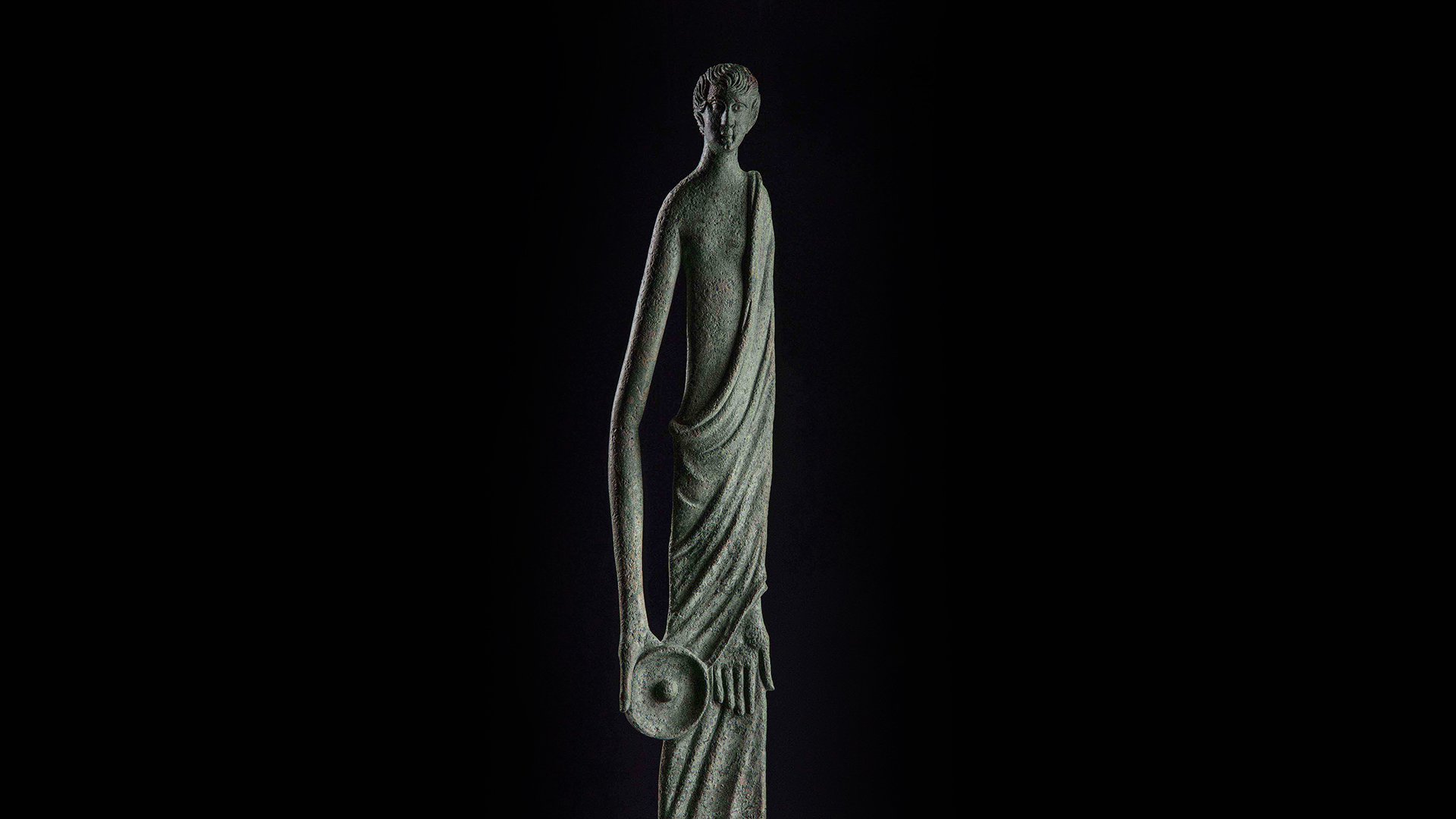Hinthial, the Shadow of San Gimignano
In 2010, an unexpected archaeological discovery brought to light what turned out to be an extraordinary outdoor sacred Etruscan area, which had been in use for at least five hundred years, from the 3rd century BC to the 3rd century AD. During the renovation of a private building, the experts discovered a bronze statue lying on the bottom of the excavated area.
The statue was buried near a stone monolith, which was probably an altar on which rites were performed with religious offerings to the divinity of that place. The sacred area was located near a spring and a divinity linked to water and earth was probably worshiped there.
The discovery of the statue of the Offerer is undoubtedly the most extraordinary event. It is a marvellous statue, of the elongated bronze statuette type, from the Hellenistic period, and visually resembles the famous Shadow of the Evening statue from Volterra. The statue is more than 64 cm high and is the most elegant and refined example among those of the elongated bronze group so far observed. Originating in Volterra, it can be assumed that the place of worship of Torraccia di Chiusi was one of the border sanctuaries in the Volterra territory. The interpretation lies in the place name, where the "chiusa" (enclosure) alludes to the pre-Roman, imperial and then early medieval road that we all know as Via Francigena, which passes right through the sacred area; while the "fauci" (opening), hidden in the name of the Fosci torrent, marks the place of entry into the Volterra territory.



